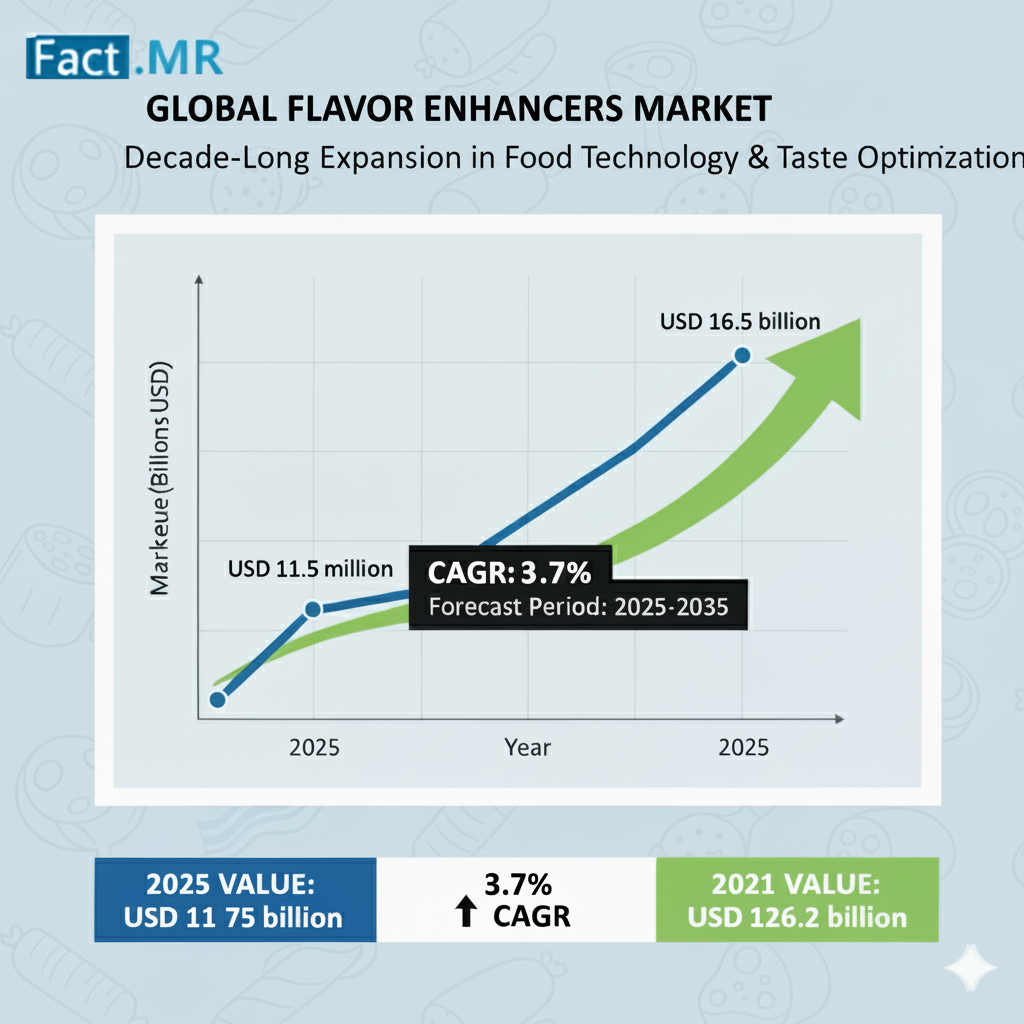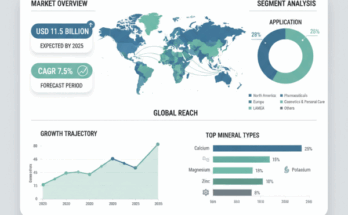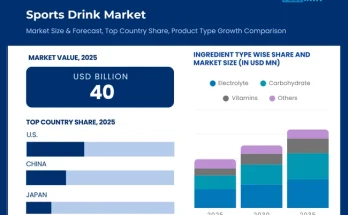The flavor enhancers market stands at the threshold of a decade-long expansion trajectory that promises to reshape food technology and taste optimization solutions. The market’s journey from USD 11.5 billion in 2025 to USD 16.5 billion by 2035 represents substantial growth, The market will rise at a CAGR of 3.7% which demonstrating the accelerating adoption of advanced flavor technology and food taste enhancement across food processing facilities, beverage companies, and global culinary markets. This expansion reflects the escalating integration of advanced flavor technologies across food manufacturing, beverage innovation, and global culinary systems.
From MSG-based formulations to clean-label plant-derived solutions, the flavor enhancers market is entering a dynamic phase defined by technological sophistication, consumer health consciousness, and taste optimization innovation. Industry leaders such as Ajinomoto, Cargill, Kerry, Givaudan, and Firmenich are strategically aligning portfolios to serve this rapidly evolving demand landscape.
Strong Market Fundamentals and Revenue Shifts:
The market’s first growth phase (2025–2030) will see revenues climb from USD 11.5 billion to USD 13.8 billion, adding USD 2.3 billion in value. This stage will be dominated by the adoption of MSG-based and hydrolyzed protein systems, reflecting the increasing global appetite for processed and convenience foods. By 2035, the second phase will add another USD 2.7 billion, propelled by clean label enhancers, plant-based alternatives, and advanced hydrolyzed protein technologies.
Current revenue streams are led by MSG-based enhancers (42%), followed by hydrolyzed protein systems (27%), and nucleotides and specialty compounds (31%). By 2030 and beyond, revenue diversification will accelerate, with natural and plant-derived flavor enhancers capturing up to 40% of the total market as manufacturers transition toward health-focused formulations and sustainability goals.
Processed Foods Dominate, Beverage and Snack Applications Accelerate:
Processed food applications command nearly 48% of total demand, driven by rising consumption of packaged and ready-to-eat products worldwide. The beverage sector, currently accounting for 28% of demand, is expected to gain ground as sports drinks, plant-based beverages, and functional drinks increasingly incorporate customized flavor enhancement systems. Meanwhile, savory snacks and bakery applications are evolving as key innovation centers for taste optimization technologies.
The powder form segment leads with a 62% market share, reflecting its superior storage stability, cost efficiency, and versatility in manufacturing. Powder formulations are expected to remain the industry standard due to ease of integration and shelf-life advantages across diverse food categories.
Regional Growth: North America and East Asia Lead, Europe Advances Clean Label Transformation:
North America remains the largest and fastest-growing region, accounting for a dominant share led by the United States (4.1% growth rate). The region’s food processing sophistication and demand for consistent taste quality make it the benchmark market for industrial flavor optimization. U.S. manufacturers are focusing on natural enhancer innovation, salt-reduction solutions, and sustainable formulation technologies, supported by strong R&D infrastructure.
Europe follows with a projected rise from USD 3.2 billion in 2025 to USD 4.5 billion by 2035 (CAGR 3.5%), with Germany (29.1%), United Kingdom (24.8%), and France (22.3%) as leading contributors. The continent’s emphasis on clean label compliance, natural ingredient sourcing, and culinary innovation continues to shape premium flavor enhancer adoption. Germany’s organic food leadership and France’s gastronomic excellence both underscore Europe’s shift toward eco-friendly taste enhancement.
In East Asia, markets such as Japan (3.0%) and South Korea (3.2%) are accelerating adoption through fermentation-based flavor systems and umami enhancement technologies, backed by strong domestic innovation and export potential. Meanwhile, Mexico (3.8%) and Brazil lead Latin America’s expansion through large-scale food processing modernization programs and cost-effective enhancer integration.
Emerging opportunities include flavor-enhancing systems that blend natural taste with functional health benefits, supporting low-sodium, high-protein, or nutritionally enriched food applications. Companies that design application-specific flavor systems—combining sensory science with clean-label compliance—will gain competitive differentiation.
Competitive Landscape: Innovation at the Core:
The global flavor enhancers market is moderately consolidated, with the top five players controlling nearly 60% of total revenues. Global leaders such as Ajinomoto, Cargill, Kerry, Givaudan, and Firmenich dominate through technology platforms, R&D excellence, and global supply chains. However, emerging competitors specializing in natural ingredient solutions, regional taste adaptation, and plant-based innovations are rapidly gaining traction.
Innovation now defines the competitive edge—whether through enzymatic hydrolysis for protein-derived enhancers, natural umami formulation for plant-based foods, or functional combinations that deliver taste alongside nutrition. Companies investing in sensory analysis labs, application testing facilities, and regulatory guidance systems are best positioned to capture the evolving market demand.
Strategic Outlook for Industry Stakeholders:
For manufacturers and ingredient suppliers, the next decade offers a clear blueprint for growth:
- Design for taste outcomes — Move from basic enhancement to complete sensory optimization systems.
- Commit to clean label readiness — Expand natural ingredient portfolios and ensure transparent compliance.
- Invest in application expertise — Offer end-to-end technical support, from formulation to processing integration.
- Leverage regional strengths — Align innovation with local taste profiles and regulatory standards.
The global flavor enhancers market represents a strategic convergence of science, taste, and consumer wellness—transforming the future of food innovation. As manufacturers pivot toward natural, sustainable, and health-oriented formulations, flavor enhancers will remain the essential link between culinary artistry and food technology advancement.
About the Flavor Enhancers Market Report:
This market intelligence covers quantitative and qualitative insights into the global flavor enhancers market, including revenue projections, segment analysis, regional trends, and competitive benchmarking across leading manufacturers. The report provides actionable data for food processing leaders, ingredient suppliers, and innovation investors seeking to align with next-generation flavor technology opportunities.
Browse Full Report-https://www.factmr.com/report/403/flavour-enhancers-market



